
Još '50-ih Von Bruenchenhein je vidio ono što miksroskopi i teleskopi vide tek danas. Ali i više - vidio je da je znantvena materija samo osnovnoškolsko štrebersko pojednostavljenje beskrajnih eruptivnih energija.
www.vonbruenchenhein.com/

Von Bruenchenhein was born in Wisconsin in 1910, and worked in a bakery during the 10 years (1954-1963) that the bulk of his work was completed. Very early on, Von Bruenchenhein would paint on the panels of boxes that he would bring home from the bakery. Then, he moved into painting on canvas with brushes. But, in 1954, Von Bruenchenhein’s technique changed and he started to paint on board with his fingers. In 1955, he began to add a white or cream base coat and he would scrape the paint with bakery tools, combs, and quills which would reveal the undercoat, adding an entirely new dimension to his work. Finally, in 1956, Von Bruenchenhein had mastered his own technique, and he would spend the next 5 years painting like a maniac!
Von Bruenchenhein produced almost 1,100 paintings in his lifetime. Unfortunately, he was never successful in selling his work or gaining any recognition during his lifetime. It has only been in the last several years that the importance of Von Bruenchenhein’s work has come to be realized. As part of the Centennial Celebration of Eugene Von Bruenchenhein, a huge collection of Von Bruenchenhein’s work is available in 22 separate galleries on www.vonbruenchenhein.com for download as high-resolution files! I recommend downloading a couple of these amazing pieces of art and having them printed and framed before the offer is no longer available!
EUGENE VON BRUENCHENHEIN
1910 – 1983
No 796 The Filament of Ages
April 12 – 1959
Oil on Masonite panel
24 x 24 inches
OUR NIGHT OF LIFE
Paintings, Sculpture, Photography, Poetry, Philosophy
Our Night of Life
In dreams we float
To other worlds
And other shores,
To salvage what we may,
To build and beautify
Our night of life.
Eugene Von Bruenchehein, “Freelance Artist, Poet and Sculptor, Inovator [sic], Arrow maker and Plant man, Bone artifacts constructor, Photographer and Architect, Philosopher”, never really found contentment in the real world, except in his love for his wife Marie. His was the world of dreams, ideas, of escaping, traveling to far off undiscovered worlds beyond Earth.
I journeyed to the edge of Universe
Where stars collide and end in dust
The junk yard of the Universe
Where inky darkness lasts from
millenium to millenium
Far – Far – into the unwanted portion of time. . .
Born in the year that Halley’s comet passed by our planet, Von Bruenchenhein spent much of his life exploring the unseen and unexplained relationships inherent in living things – human, cosmic, and everything in between. He sought and provided answers to the largest of questions. “Why is there no wall beyond the fringe of Universe? Because something always lies beyond a wall, And because no Universe can be contained.” Our Night of Life celebrates this extraordinary vision, through which nature is infinitely fluid, continually revealing new aspects of itself.
It is now twenty-four years since Eugene Von Bruenchenhein’s works came into public light, and since that time our examination of his work still has not had the time to fully comprehend the many facets of his artistic vision, within the many mediums in which he worked. The works themselves are journeys into their meanings, but the artist’s writings – less well know than the paintings, sculptures, and photos – add yet another dimension to his world. Von Bruenchenhein formulated elaborate “Bruenchenesian” theories, postulating on the complexity of nature and our ability to know it. In one selection he suggests that only one of nature’s planes is visible through a scientific lens:
We consider ourselves so smart and yet after the
great length of time man has lived on Earth he has just
scratched the surface of knowledge. . . As far as science goes
we have only looked in the mirror, not [at] what is concealed
behind. . .
Von Bruenchenhein spent hours looking at drops of water through a microscope, and was equally concerned with a macrocosmic order, evident in musings and paintings about the worlds beyond ours. He made exceptionally convincing paintings of “Lines of Force Contained” and “Lines of Force Released”, pictorializing what science could only express in numeric formulae. Now, one only needs to pick up a New York Times daily newspaper in which a recent photograph by the Hubbell Telescope is featured revealing some amazing new cosmic cataclysm or ein had already traveled there.
|
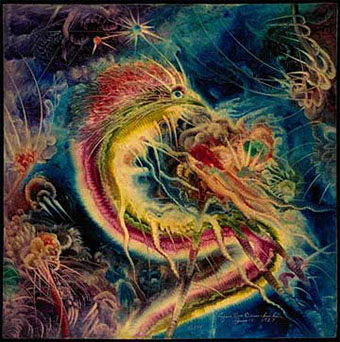 Gallery: A Dream May Be Forever, EVB #598
Gallery: A Dream May Be Forever, EVB #598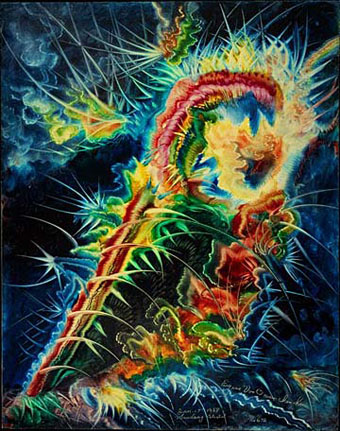 Gallery: The Search for Paradise, EVB #672
Gallery: The Search for Paradise, EVB #672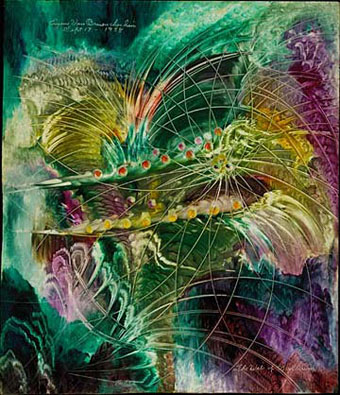 Gallery: Transitory Enigma, EVB #742
Gallery: Transitory Enigma, EVB #742




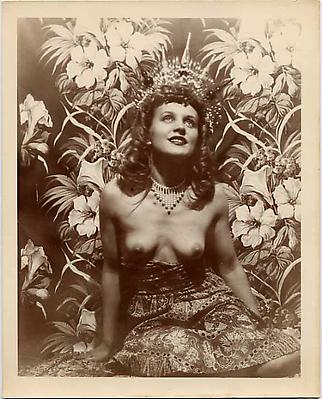
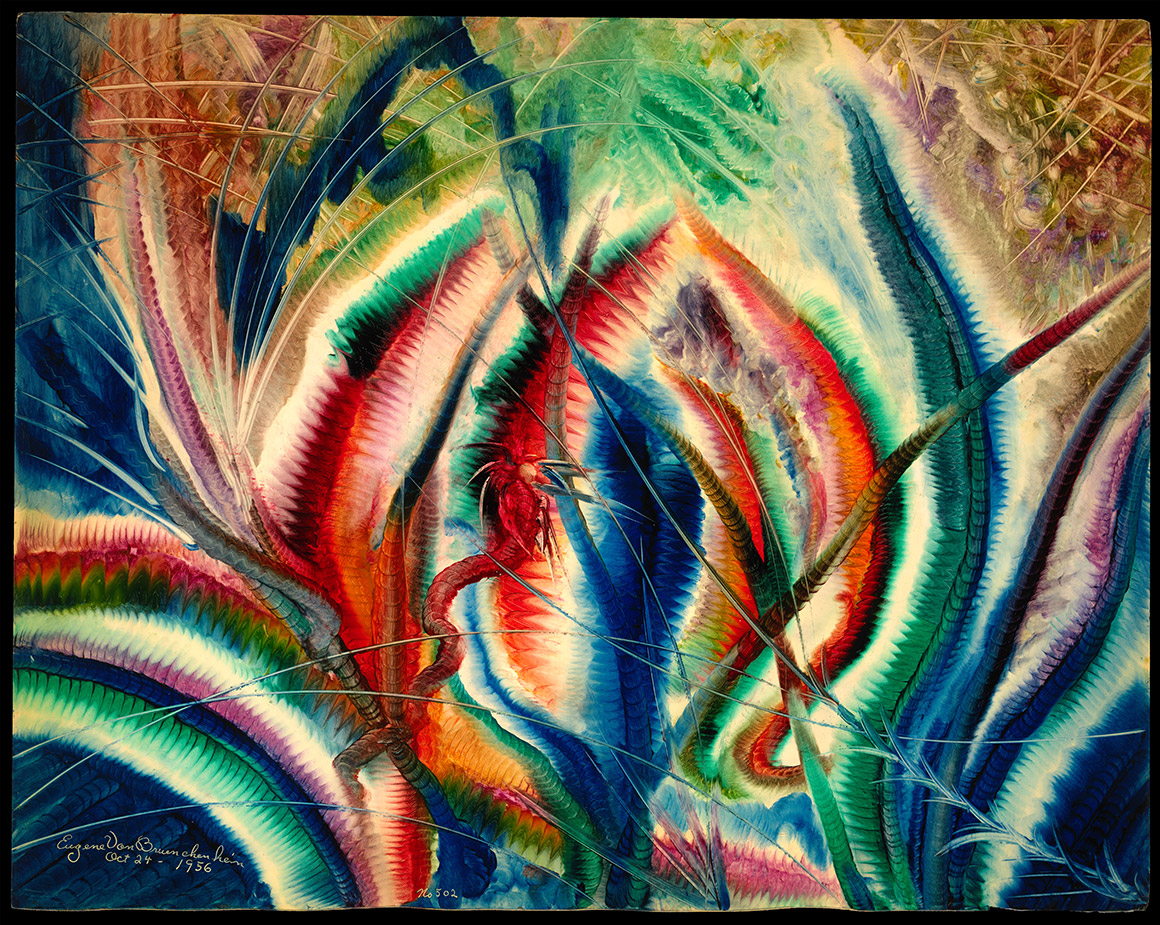 Gallery: Hidden and Precious, EVB #502
Gallery: Hidden and Precious, EVB #502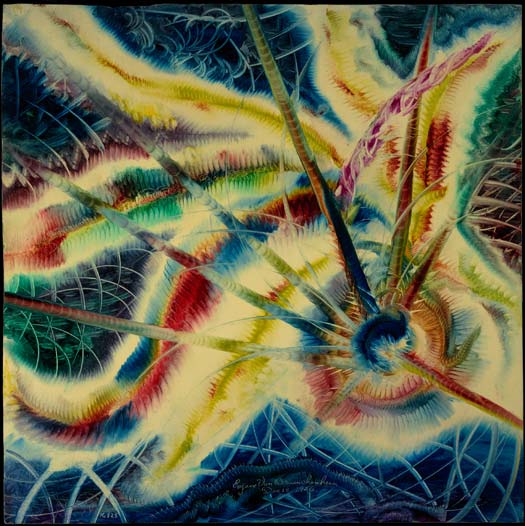
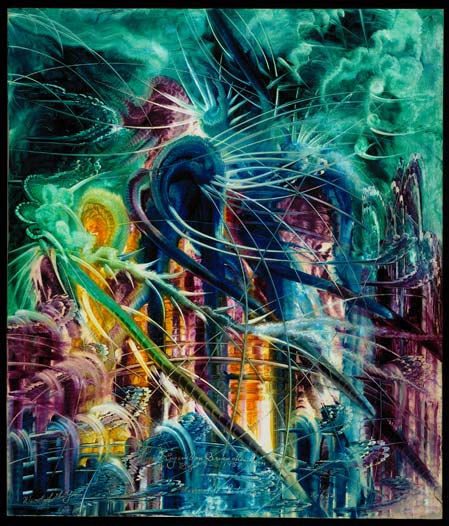
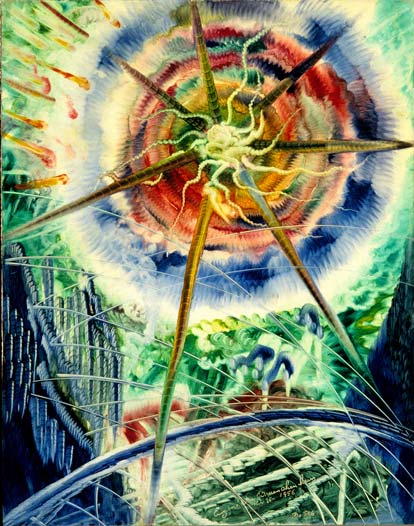
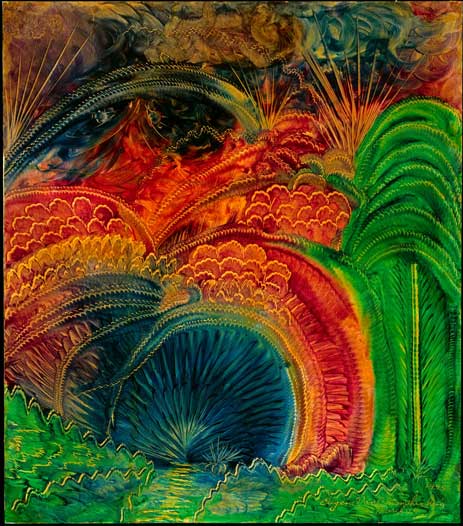
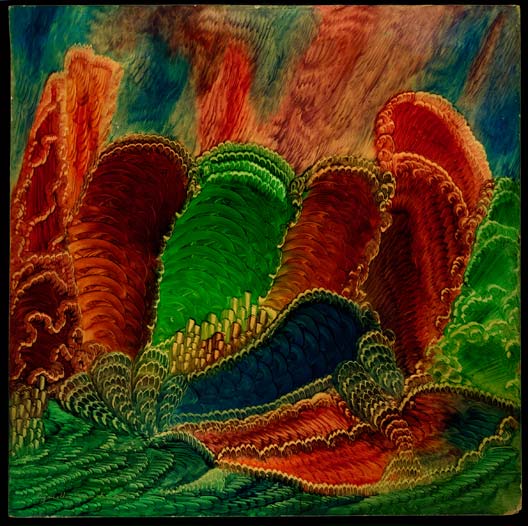
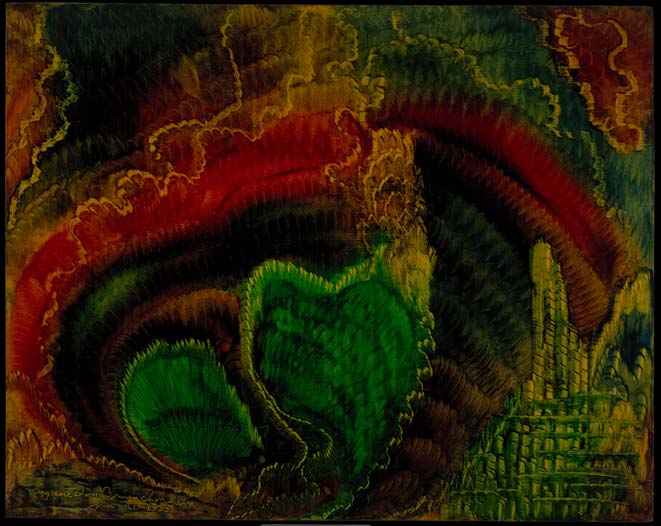
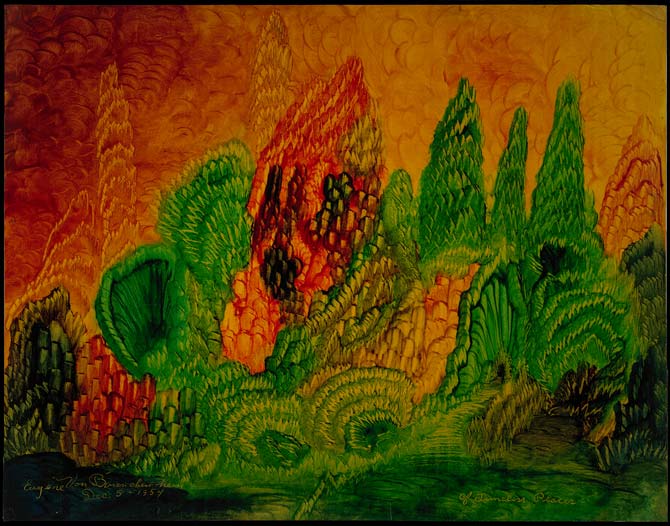
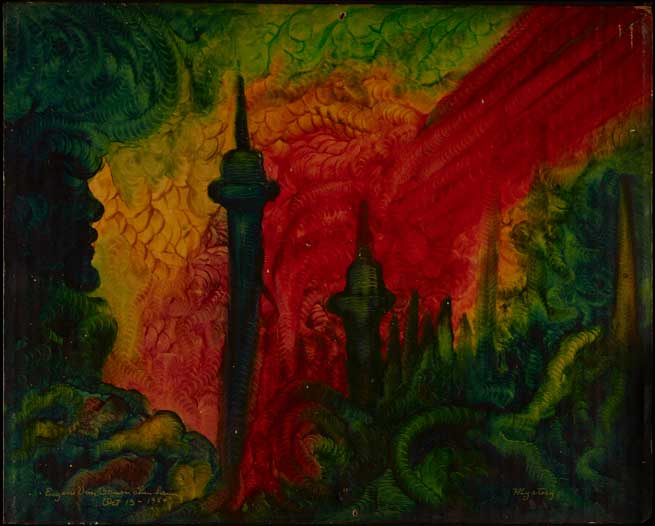
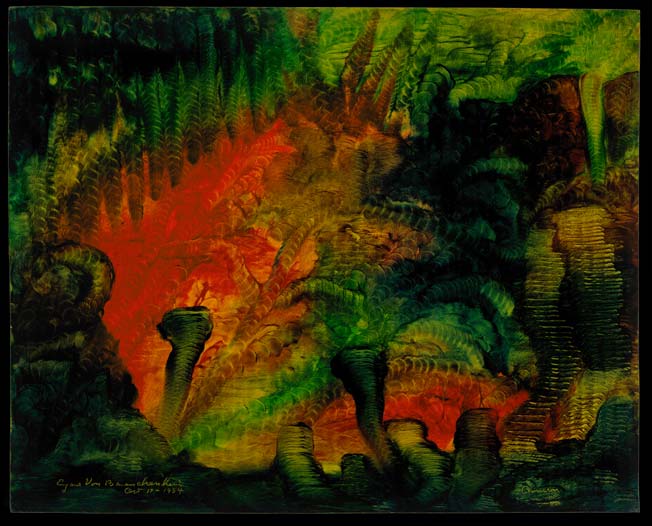
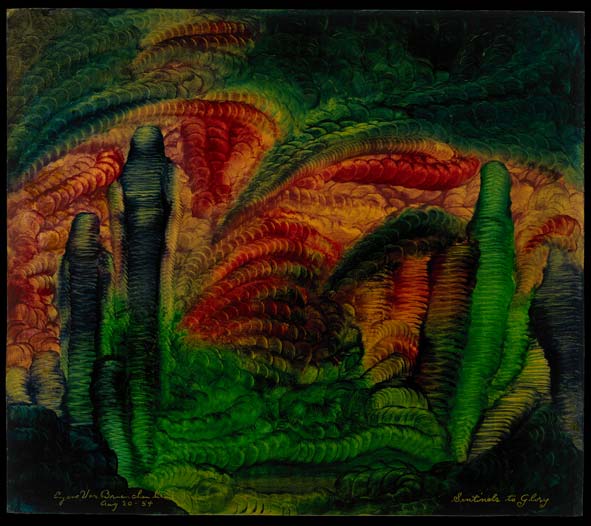
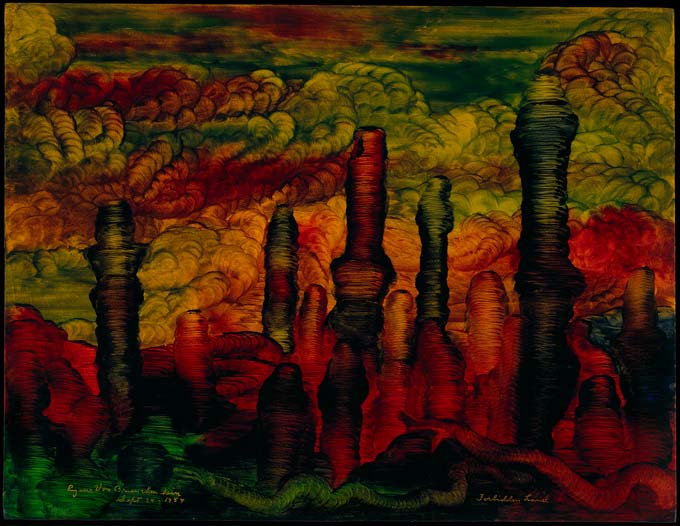
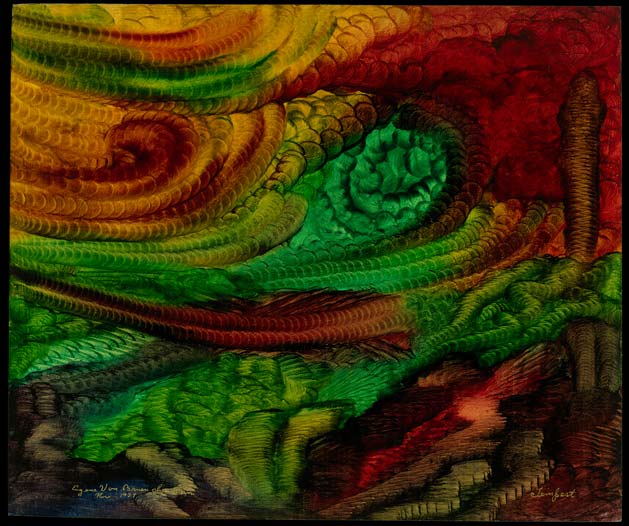
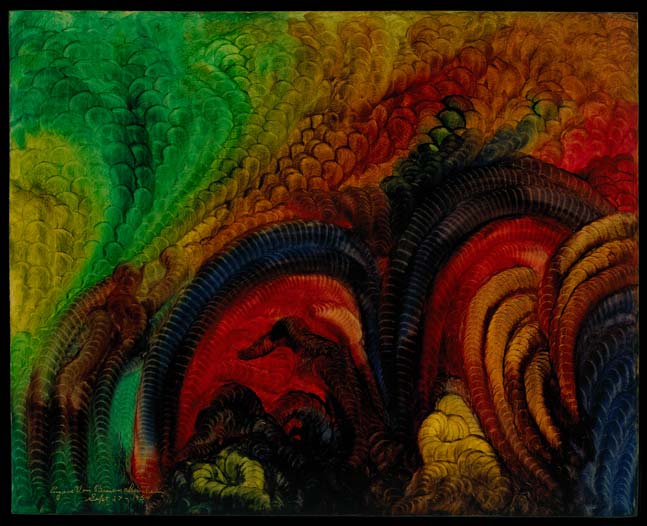
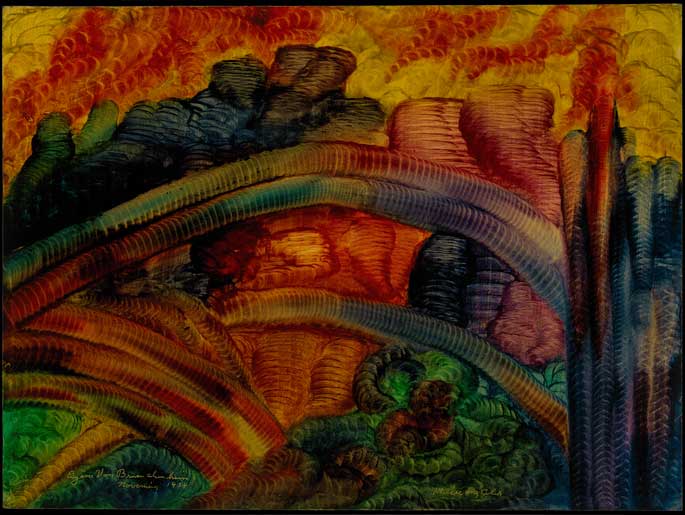
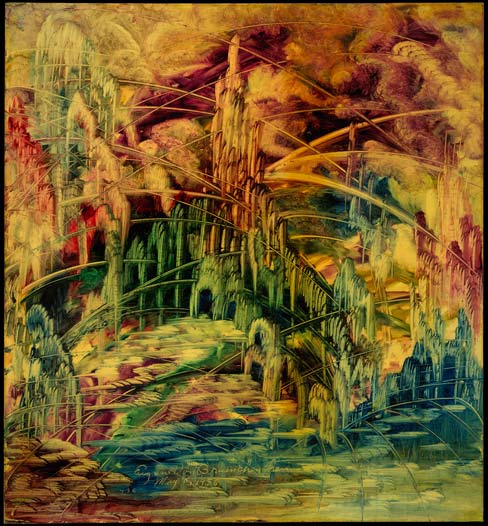
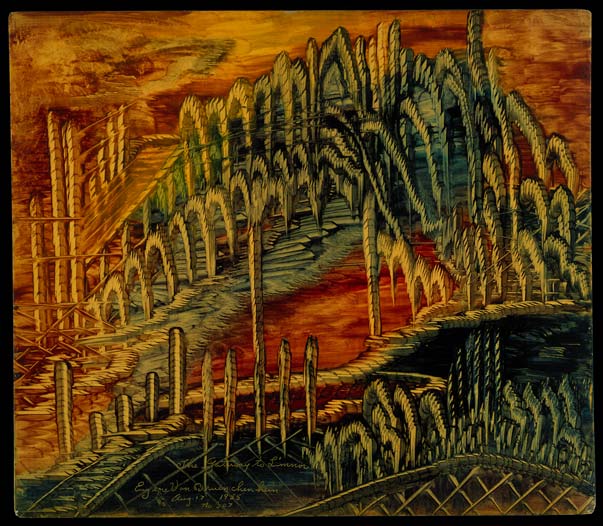
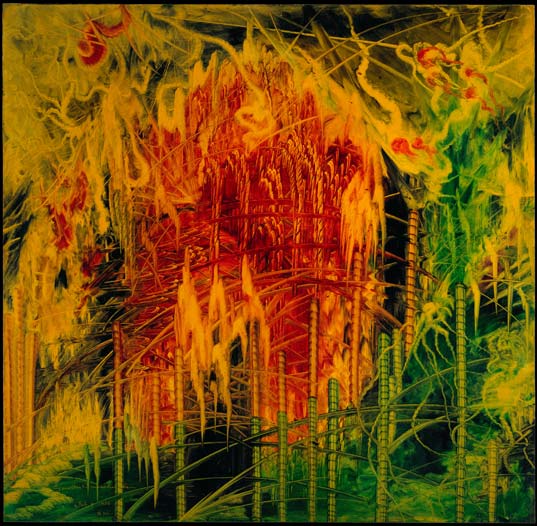
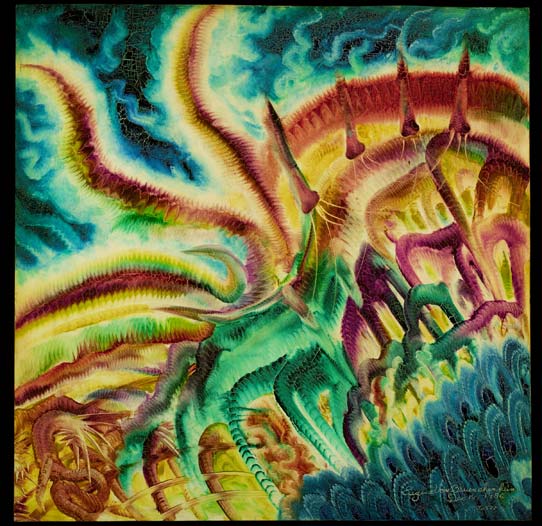
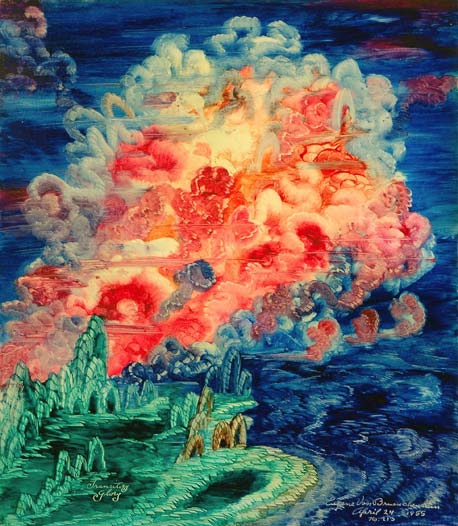
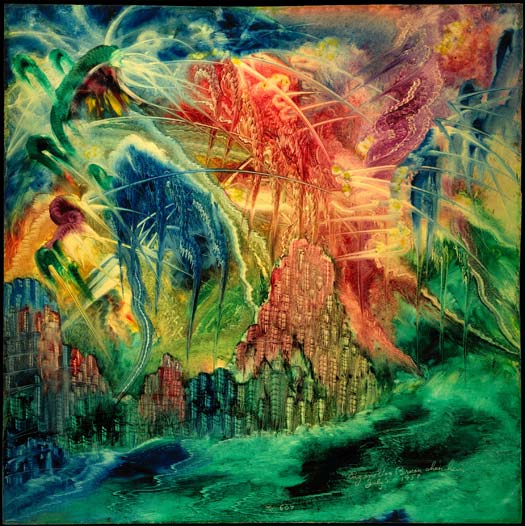
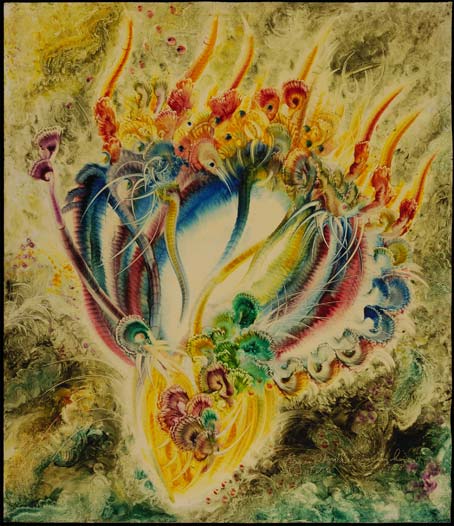
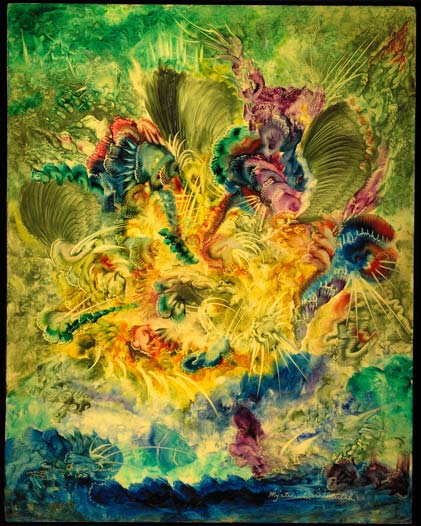
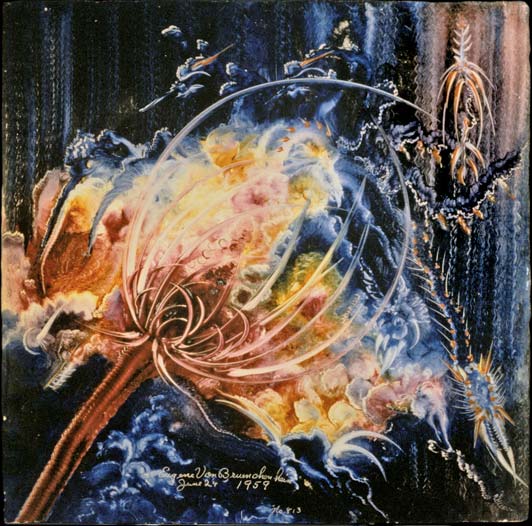
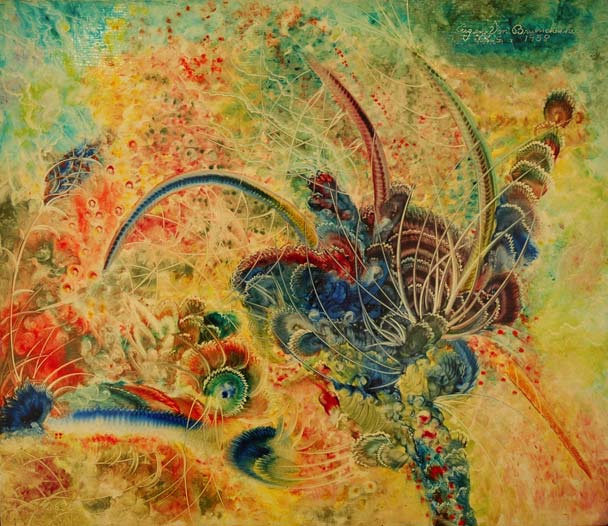
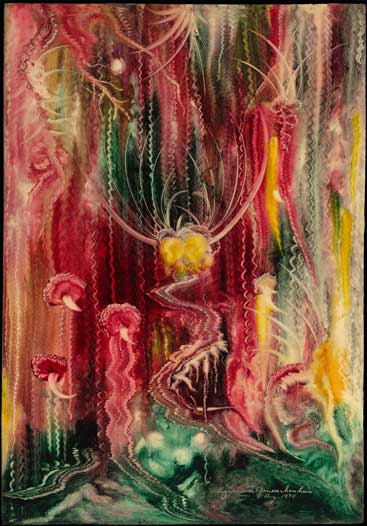
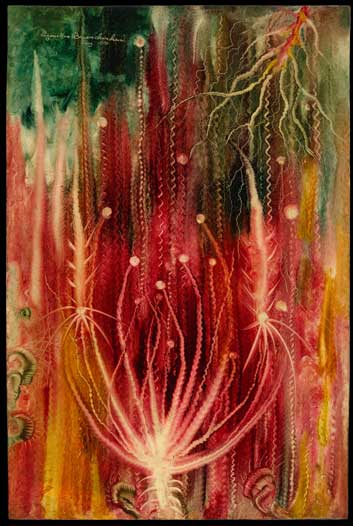
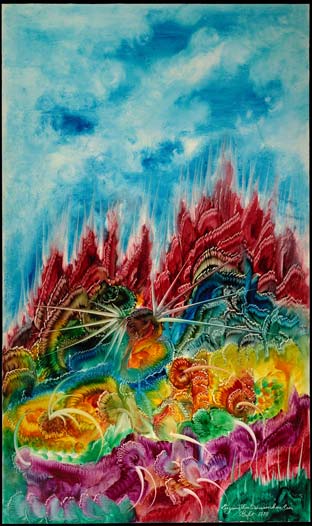
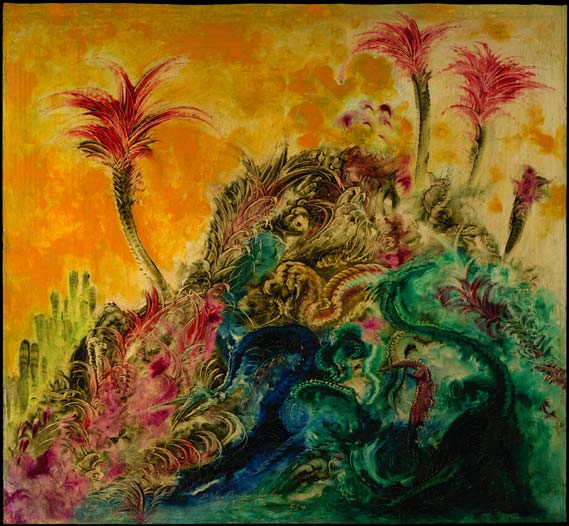
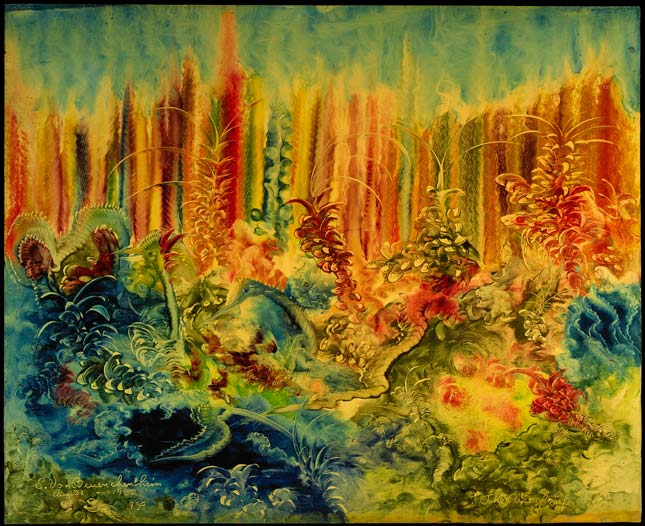
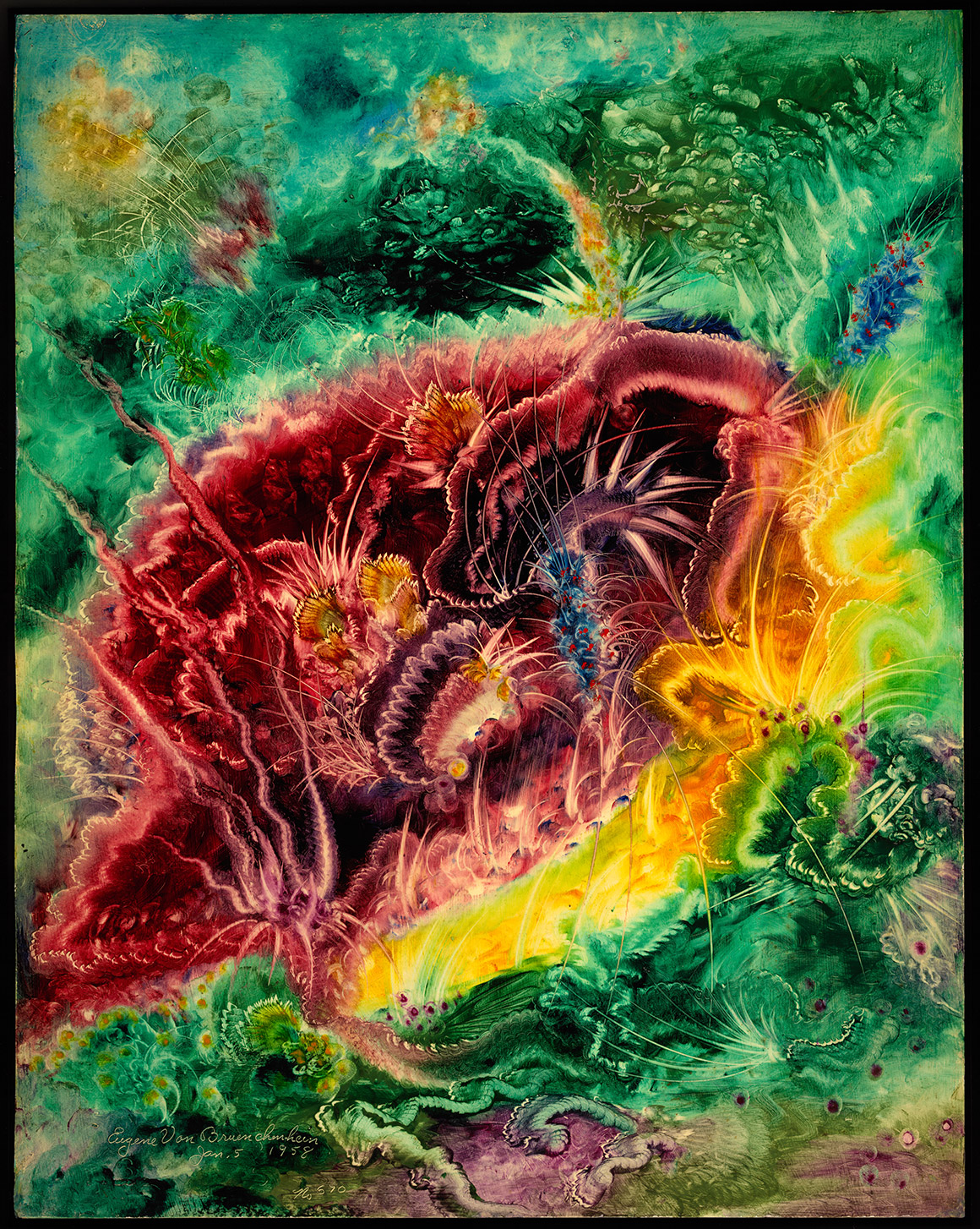 Gallery: Hidden and Precious, EVB #670
Gallery: Hidden and Precious, EVB #670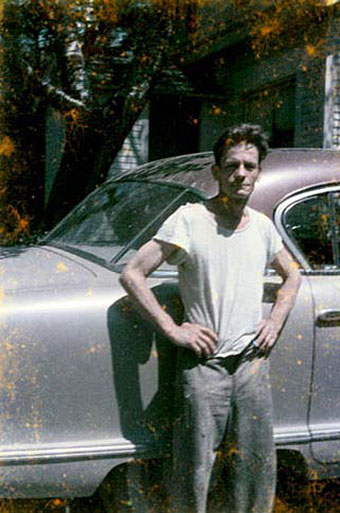
Nema komentara:
Objavi komentar